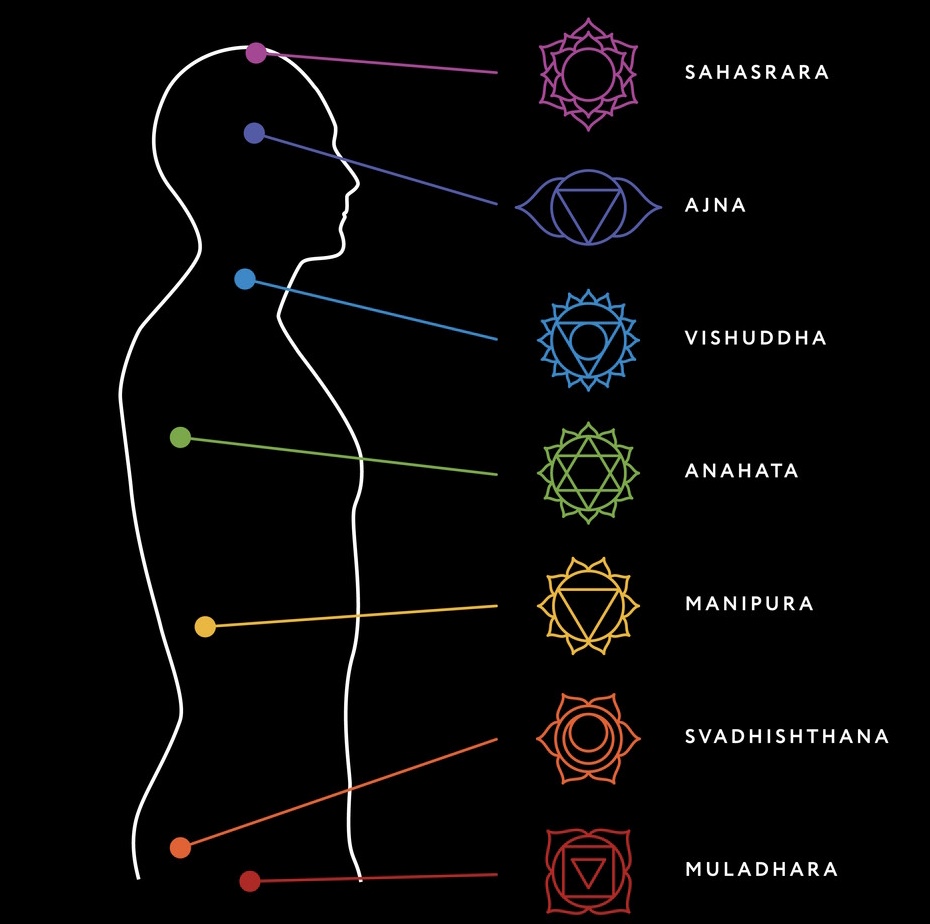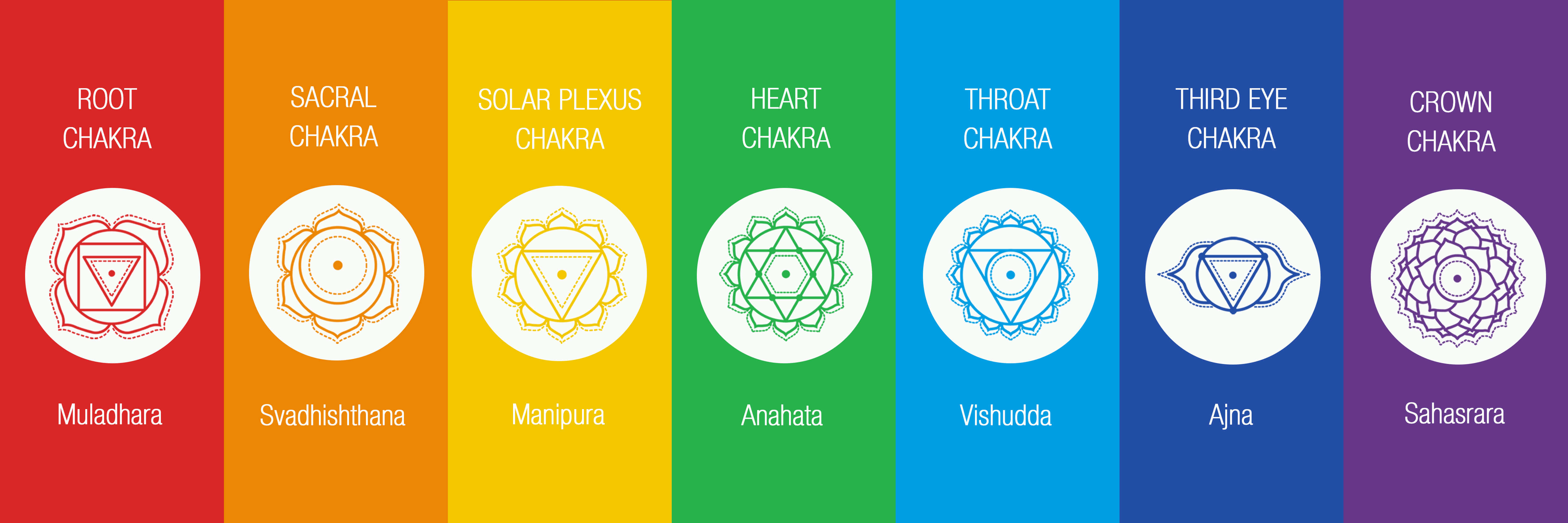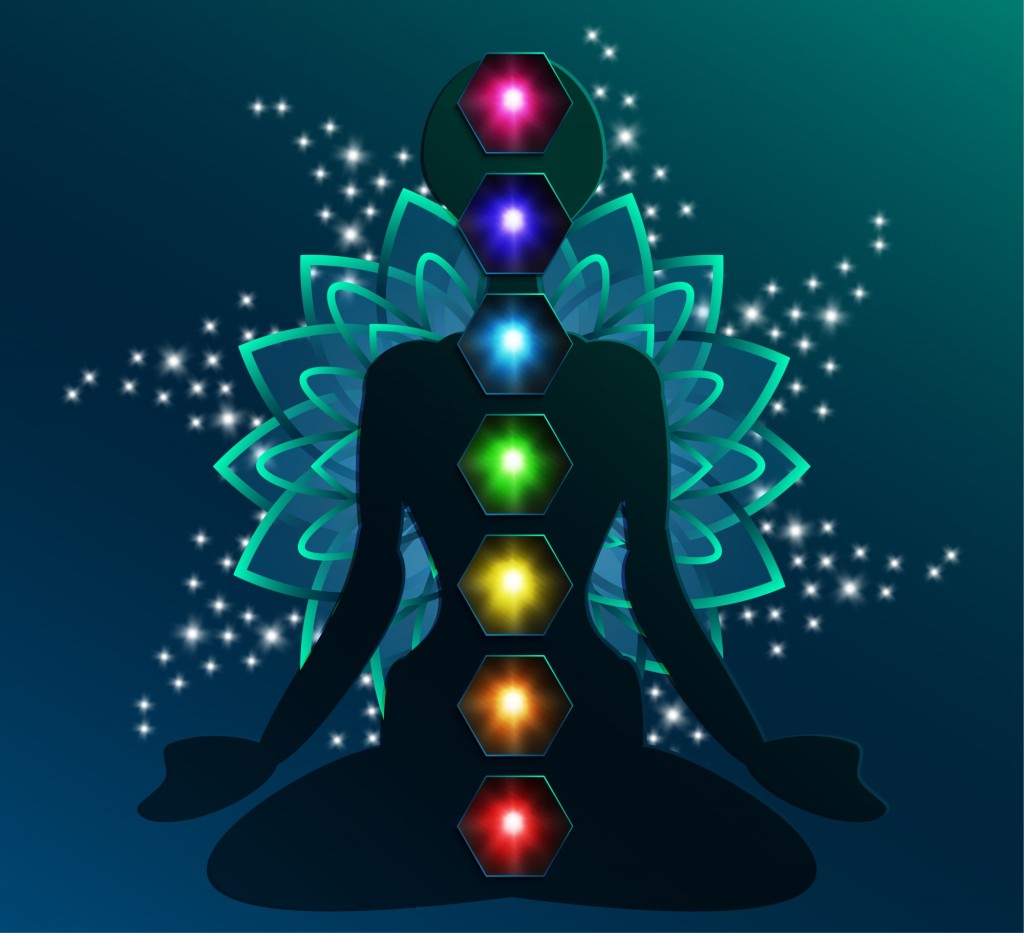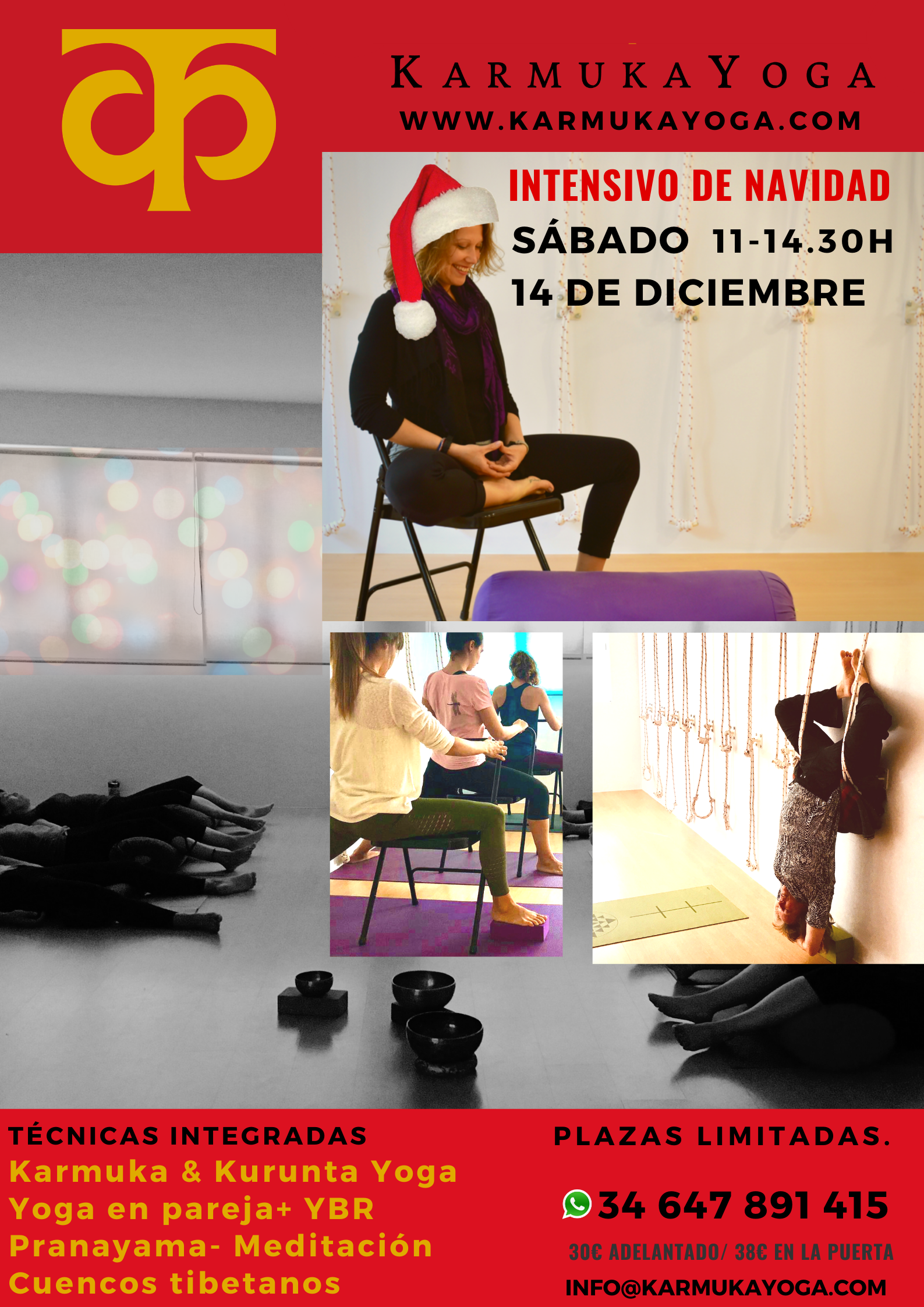 The philosophy and antaomy of Yoga tells us that we are energy and that within us there are various different frequencies that vibrate and affect us on both an emotional and physical level. Quantum physics is now confirming this. The centers of energy discussed above are called chakras. Chakra in Sanskrit literally means ´spinning wheel´. Chakras are wheels of energy located in different parts of the body along the spine and are associated with the endocrine system glands. One of the purposes of Hatha Yoga is to open the blocks within these wheels of energy, within the endocrine glands, so that they can spin and function effectively, with the practice of Asana.
The philosophy and antaomy of Yoga tells us that we are energy and that within us there are various different frequencies that vibrate and affect us on both an emotional and physical level. Quantum physics is now confirming this. The centers of energy discussed above are called chakras. Chakra in Sanskrit literally means ´spinning wheel´. Chakras are wheels of energy located in different parts of the body along the spine and are associated with the endocrine system glands. One of the purposes of Hatha Yoga is to open the blocks within these wheels of energy, within the endocrine glands, so that they can spin and function effectively, with the practice of Asana.
The science of Yoga shows that the location of each chakra is associated with certain glands of the endocrine systems. The endocrine system acts as a great network of communication between brain and body and is in charge of various metabolic functions that facilitate cellular communication as well as stimulation and hormone release. In order for the entire human organism to function well it is necessary that these endocrine glands produce and maintain a balance of these various fluids and hormones.
The chakras, endocrine glands and asana

• Sahasrara & Anja Chakras: The balance and release of the various hormones throughout the body is controlled mainly by the hypothalamus as well as the pituitary gland which is associated with the crown chakra, or Sahasrara chakra at the top of the skull. These same chakras are also closely related to the pineal gland which is often associated with the Third Eye/Ajna (associated with intuition and spirituality…as well as the release of DMT). Headstand/Sirsasana is the most beneficial in activating these glands/chakras, hence why it is considered the King of Asanas. Nonetheless any kind of inversion is useful for activating and balancing these chakras. It is not necessary to hurt your cervical spine to active the crown or third chakra. Look for modifications of the pose if you have any physical discomfort along the neck or spine.
• Vishuddha Chakra: Moving down to the Thyroid and Parathyroid glands. The Thyroid is located in the throat and associated with the Vishuddha chakra (throat chakra). It is responsible for controlling metabolic rate, growth and therefore, cell processes. Functioning of the Parathyroid determines how much calcium and phosphate are in the blood and if you regularly do the shoulder stand/Sarvangasana (Queen of Asanas) and the fish pose/Matsyasana you might just find your teeth are stronger, your sleep and appetite regulated as well as an increase in energy levels.
• Anahata Chakra: Below the Vishuddha Chakra in the location of the heart resides the Anahata Chakra. This chakra is associated with the thymus gland that produces cells for the immune system. Postures that open the chest and increase oxygen intake in this area help to activate this chakra. Virsasana, Ustrasana and Virabhandrasana I, II are good examples. With these postures you also have the added benefit of working with the Root/Muladhara chakra as well as the solar plexus/ Manipura chakra.
• Manipura & Muladhara Chakras: Below these glands we then come into contact with the Pancreatic and Adrenal Glands which are associated with the Solar Plexus/Manipura and the Root/Muladhara chakra, respectively. (These glands work closely together so I put them in the same paragraph and left the Sacral/Svadhisthana chakra for the end). The pancreas aids in digestion while the adrenal glands guide our ‘fight or flight’ response. It is said that due to high stress levels and diet the majority of people nowadays have low functioning adrenals that result in a sense of fatigue and foggy thinking. Doing postures that massage these glands as well as the spleen and pancreas helps to regulate blood sugar levels, which has a huge impact upon both physical and emotional well-being. Working with these chakras can also help with weight-loss due to the regulation of insulin that occurs as a result of massaging the aforementioned glands. Mayurasana, or the Peacock, is great for this, but often too advanced. Doing twists such as Ardha Matsyendrasana or back bends like Dhanurasana (The Bow), as well as Supta Virasana are very useful in activing these glands as well.
• Svadhisthana Chakra: Finally, we move to the ovaries and testes where the Sacral/Svadhisthana chakra resides. Postures such as Samakonasana, Uppavista Konnasana, Eka Pada Rajakapotasana (pigeon pose) or variations thereof, that open the pelvis and and/or work pelvic floor are usually quite beneficial as they bring blood flow to this area and can help with issues of fertility and/or menstruation. On an emotional level, Ana Forrest claims in her book Fierce Medicine that hip openers, especially if maintained for extended periods of time tend to get into really deep seeded emotional baggage that can have their roots in issues of security and/or sexual/emotional repression or abuse. Breathing through the pose will help you to release the baggage.

Yoga is a holistic practice and like the body it cannot be separated into parts and pieces nor can it be isolated into one specific approach. One pose will almost definitely work with more than one gland and to maintain balance in body and mind, each gland deserves your breath and attention without causing yourself injury in the process. It would not be very logical to practice a pose to active the third chakra while you cause injury in the second chakra, the area around the lumbar spine. It is for this reason that the observation and precise instruction of Yoga Asana is important to avoid injury and to be able to enjoy all the benefits that each Asana offers.
If you would like to experiment for yourself the pleasure and of a well functioning endocrine system as well as a relaxed nervios systems and aligned skeleton, gift yourself a place in the fifth annual Karmuka Yoga Christmas Intensive. A very special intensive where students will enjoy the liberating practice of Asana, Kurunta Yoga, Partner Yoga, Pranayama, Meditation and the healing vibrations of the singing Tibetan bowls.

